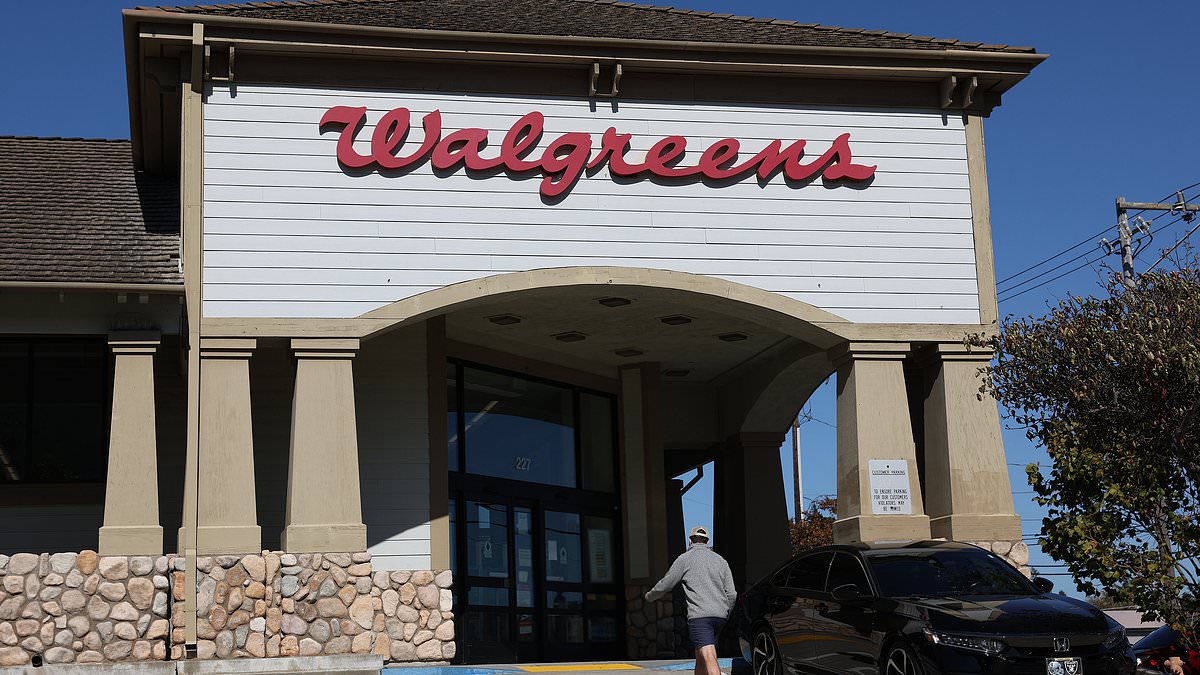Walgreens has been accused of filing millions of ‘dangerous’ opioid prescriptions in a lawsuit filed by the Department of Justice.
The complaint filed against the pharmacy giant alleges the company knowingly filled the ‘excessive’ amount of prescriptions over the last decade without a legitimate purpose.
The lawsuit, filed in the US District Court for the Northern District of Illinois, says Walgreen’s pharmacists filled controlled substance prescriptions with clear red flags that indicated they were highly likely to be unlawful.
‘These practices allowed millions of opioid pills and other controlled substances to flow illegally out of Walgreens stores,’ Principal Deputy Assistant Attorney General Brian M Boynton, head of the Justice Department’s Civil Division, said in a statement.
Walgreens also allegedly systematically pressured pharmacists to fill prescriptions without taking the time to confirm their validity, according to the complaint.
The lawsuit says Walgreens’ alleged actions were in violation of the federal Controlled Substances Act and the False Claims Act.
Four different whistleblowers who previously worked for Walgreens in various parts of the country stepped forward, the statement said.
Since the lawsuit, Walgreens responded in a statement saying it stands ‘behind our pharmacists, dedicated healthcare professionals who live in the communities they serve, filling legitimate prescriptions for FDA-approved medications written by DEA-licensed prescribers in accordance with all applicable laws and regulations.’
‘We are asking the court to clarify the responsibilities of pharmacies and pharmacists and to protect against the government’s attempt to enforce arbitrary “rules” that do not appear in any law or regulation and never went through any official rulemaking process.
‘We will not stand by and allow the government to put our pharmacists in a no-win situation, trying to comply with “rules” that simply do not exist,’ the release said.
‘We look forward to the opportunity to defend the professionalism and integrity of our pharmacists.’
The news comes after Walgreens recently announced widespread closures, including 12 stores in San Francisco at the end of February.
The drugstore chain has been struggling financially for several years, leading to the closure of over 1,200 stores nationwide by 2027.
Walgreens’ CEO Tim Wentworth unveiled a series of changes last year, with hopes of turning around the struggling pharmacy chain’s sluggish consumer spending and low drug reimbursement rates.
‘Our retail pharmacy business is central to our go-forward business strategy. However, increased regulatory and reimbursement pressures are weighing on our ability to cover the costs associated with rent, staffing, and supply needs,’ Maloney told SFGate.
Maloney added that ‘as many [employees] as possible’ will be given the opportunity to transfer to other stores, and customer prescriptions will be transferred to nearby stores with plans to contact customers with further information.
According to Walgreens’ closure schedule, by 2027, one in seven Walgreens will have shuttered its doors. San Francisco, after the new closures, will have just 29 Walgreens stores left.
The Illinois-based company announced the closures after Wentworth revealed about a quarter of Walgreens’ 8,600 stores were underperforming across the US.
‘It is never an easy decision to close a store. We know that our stores are important to the communities that we serve and therefore do everything possible to improve the store performance.
‘When closures are necessary, like those in San Francisco, we will work in partnership with community stakeholders to minimize customer disruptions,’ Wenworth said.
Wentworth also recently revealed that the company’s efforts to keep shoplifters at bay by locking up items hasn’t worked.
Not only did the practice not deter thieves, but it also dramatically – and negatively – affected sales.
Over the past few years, major retailers like Walgreens, CVS, Walmart and Target have increasingly resorted to locking up everyday items such as toothbrushes, deodorant, laundry detergent, coffee and even milk.
The practice has sparked customer frustration, with many complaining about the inconvenience of waiting for an employee to unlock basic necessities.
At a recent earnings call, Wentworth admitted that despite the measures there was a 52 percent increase in ‘shrinkage’, a term used for inventory lost to theft.
‘When you lock things up … you don’t sell as many of them. We’ve kind of proven that pretty conclusively,’ Wentworth admitted.
Instead, Wentworth said the company will need to look into ‘creative’ solutions to fight the ‘hand-to-hand combat battle’ of shoplifting.
For now, however, Walgreens appears to be addressing the issue by closing stores in areas most affected by theft.
A federal judge ruled in 2022 that Walgreens could be held responsible for contributing to San Francisco’s opioid crisis for over-dispensing highly addictive drugs for years without proper oversight.
In November of that year, Walgreens, CVS and Walmart agreed to pay $13.8 billion to resolve thousands of lawsuits over opioid painkillers.
Under the proposed settlement, Walgreens agreed to pay about $5.7 billion over 15 years.
The companies did not admit to allowing highly addictive opioids to be redirected into illegal trafficking despite the payouts, according to two people familiar with the matter.
Walgreens said in its SEC filing that it ‘continues to believe it has strong legal defenses’ and will defend itself vigorously against any future lawsuits not covered by the settlement.
